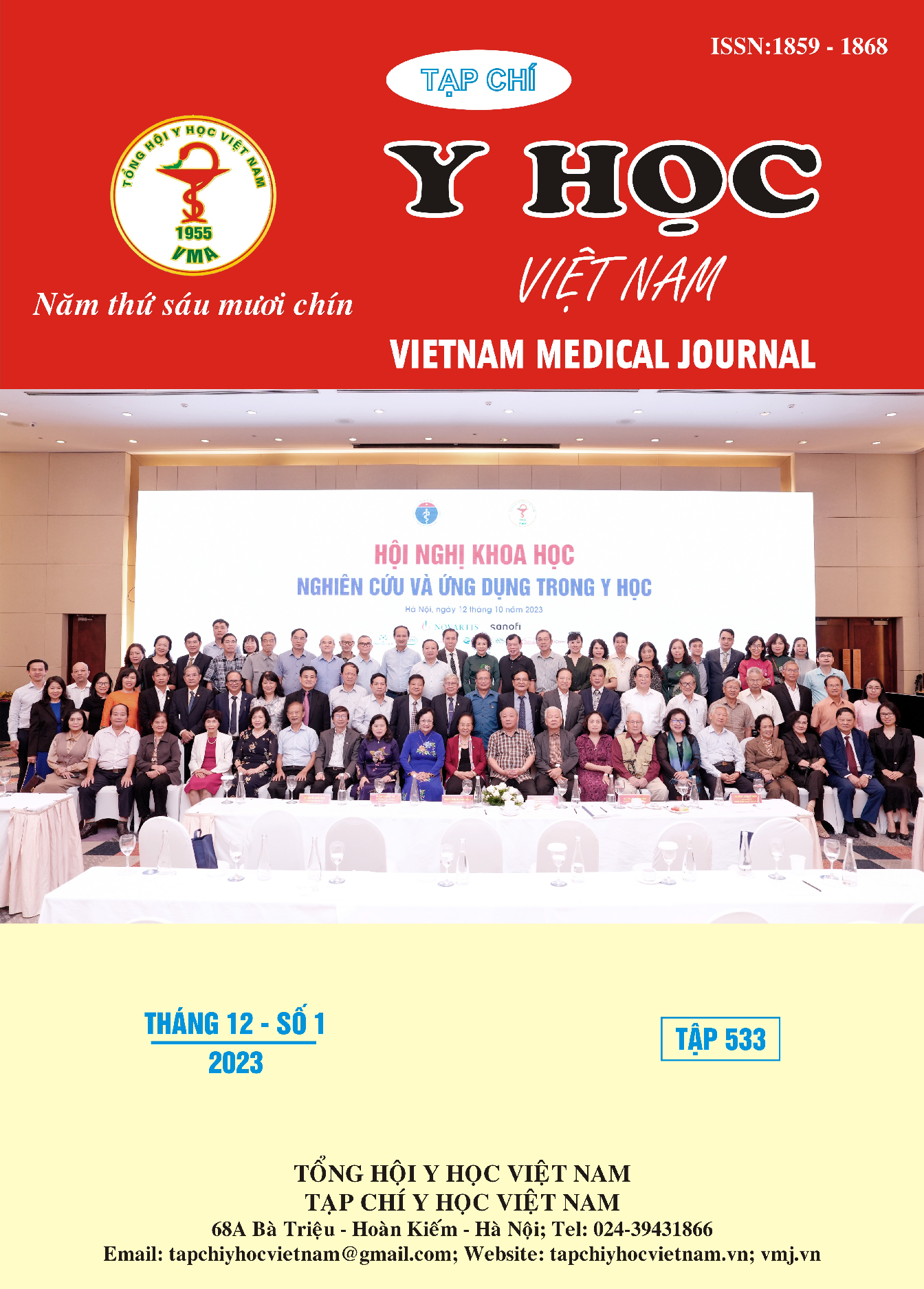RESULTS OF POSTOPERATIVE PAIN MANAGEMENT FOR PATIENTS UNDERGOING LAPAROSCOPIC LIVING DONOR NEPHRECTOMY AT VIET DUC HOSPITAL
Main Article Content
Abstract
Objective: Evaluation of Postoperative Pain Management for Living Kidney Donors at Viet Duc Friendship Hospital. Patients and Method: This cross-sectional study involved 166 living kidney donors who underwent laparoscopic surgery with phu mac. Pain management followed a standardized protocol, combining patient-controlled intravenous analgesia (PCA) with local infiltration anesthesia using 2% lidocaine subcutaneous injection. Pain relief effectiveness was assessed using the VAS scale at different time points: upon removal of the endotracheal tube, upon transfer to the ward, time to bowel movement restoration, and postoperative variables. Results: The study included 86 males and 80 females. The average surgical times for right and left kidneys were 115.1±22.75 minutes and 120.33±22.57 minutes, respectively. Right kidney retrieval required 4 trocars, while left kidney retrieval required 3 trocars. The incision length for kidney retrieval was approximately 10 cm. After 2 hours, 96.3% of patients reported VAS scores below 4. On the first day after surgery, 93.37% of patients in the ward experienced mild pain (VAS 3-4), with only 6.63% reporting moderate pain (VAS 5-6). Pain levels were minimal in the following days, and the incidence of unwanted side effects was low. Conclusion: Postoperative pain management through local infiltration anesthesia combined with PCA demonstrated effective pain relief, faster mid-term recovery, and high patient satisfaction levels for living kidney donors.
Article Details
References
2. Lentine K.L., Kasiske B.L., Levey A.S., et al. (2017). KDIGO Clinical Practice Guideline on the Evaluation and Care of Living Kidney Donors. Transplantation, 101, 1–109
3. Savran-Karadeniz M, Kisa I, Salviz EA, et al. Can surgical approach affect postoperative analgesic requirements following laparoscopic nephrectomy: Transperitoneal versus retroperitoneal? A prospective clinical study. Arch Esp Urol. 2017; 70(6): 603-611
4. Nguyễn Trần Hoàng (2022) Đánh giá hiệu quả của gây tê mặt phẳng cơ dựng sống hai bên bằng hỗn hợp Anaropin và Dexamethasone cho giảm đau trong và sau phẫu thuật sỏi đường mật. Luân văn Thạc sĩ, đại học Y Hà Nội.
5. Nguyễn, T. P., Phạm, V. Đông, & Võ, V. H. (2023). HIỆU QUẢ GIẢM ĐAU ĐA MÔ THỨC SAU PHẪU THUẬT NỘI SOI TRONG VÀ SAU PHÚC MẠC LẤY THẬN GHÉP Ở NGƯỜI HIẾN SỐNG. Tạp Chí Y Dược học quân sự, 48(6), 87-97. https://doi.org/ 10.56535/jmpm.v48i6.384
6. Abu Elyazed MM, Mostafa SF, Abdelghany MS, Eid GM. Ultrasound-Guided Erector Spinae Plane Block in Patients Undergoing Open Epigastric Hernia Repair: A Prospective Randomized Controlled Study. Anesth Analg. 2019; 129(1): 235-240. doi:10.1213/ ANE. 0000000000004071
7. Vũ Thị Hằng (2021) Sự hài lòng của người bệnh khi được sử dung phương pháp giảm đau ngoài màng cứng sau phẫu thuật vùng bụng. Tạp chí Điều Dưỡng Việt Nam, 8 – 15


